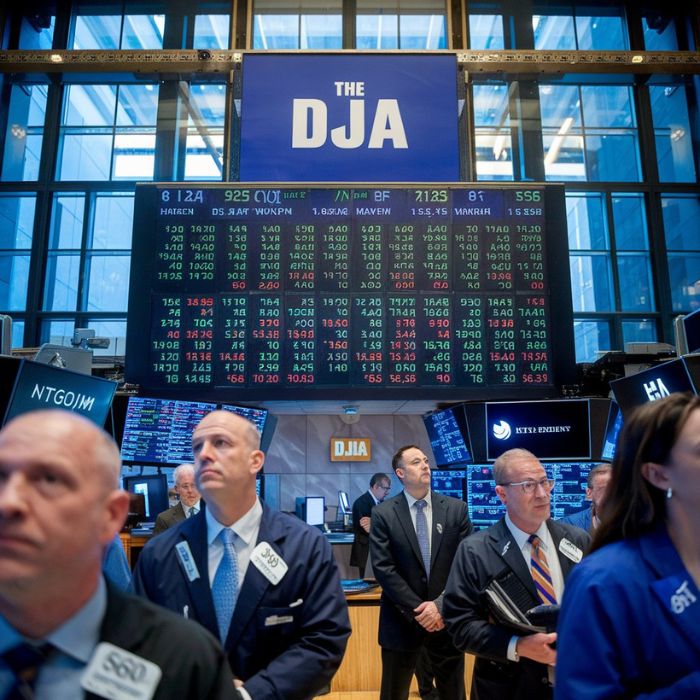Overview of the DJIA
The stock market can seem like a labyrinth, filled with numbers and trends that often leave investors scratching their heads. Amidst the chaos, one index stands tall: the Dow Jones Industrial Average (DJIA). This iconic benchmark has been guiding investors for over a century, serving as a vital barometer of American economic health. But what does it really represent? Why should you pay attention to it? In this blog post, we’ll unravel the complexities of the DJIA—its history, how it’s calculated, its most prominent players, and why it matters in today’s economy. Whether you’re an experienced investor or just starting out, understanding the DJIA is essential for navigating the financial landscape. Let’s dive into this fascinating world together!
History and Evolution of the DJIA
The Dow Jones Industrial Average (DJIA) traces its origins back to 1896. Charles Dow, co-founder of the Wall Street Journal, created it as a simple way to gauge market performance.
Originally, the DJIA included just 12 companies. These were primarily industrial firms reflecting America’s economic landscape at the time. The first list featured names like General Electric and American Tobacco.
Over the decades, changes occurred due to shifts in industry and economic trends. By 1928, the index expanded to include 30 companies—a number that remains today.
The DJIA has undergone several adjustments since then. Companies are added or removed based on their relevance and impact on the economy. This fluidity ensures that it reflects current market conditions effectively.
Not only does this index represent industries from technology to consumer goods, but it also mirrors America’s evolving financial narrative across more than a century.
How is the DJIA Calculated?
The DJIA, or Dow Jones Industrial Average, is calculated using a price-weighted method. This means that the stock prices of its 30 component companies directly influence the index’s value. Higher-priced stocks have a greater impact on the DJIA than lower-priced ones.
To determine the average, all stock prices are added together and then divided by a divisor. This divisor adjusts for events like stock splits and changes in components to maintain consistency over time.
Unlike other indexes that might consider market capitalization, this approach emphasizes share price alone. As such, movements in higher-priced stocks can sway the index more dramatically.
This unique calculation method often leads to debates among investors about its effectiveness as an economic indicator. Many believe it doesn’t accurately reflect broader market trends due to its focus on just 30 companies.
Top Companies in the DJIA
The Dow Jones Industrial Average (DJIA) includes some of the most influential companies in America. These firms are leaders across various sectors, showcasing the health of the U.S economy.
Apple, a tech giant, consistently leads in market capitalization and innovation. Its products have reshaped consumer electronics and digital services.
Coca-Cola represents stability and brand loyalty within consumer staples. This iconic beverage company has been a staple on the DJIA for decades.
In finance, Goldman Sachs plays a crucial role with its investment banking prowess. It reflects trends in global markets through its diverse range of financial services.
Another key player is Johnson & Johnson, known for its healthcare solutions spanning pharmaceuticals to consumer goods. Their focus on public health makes them essential during economic fluctuations.
These companies not only drive significant market movements but also influence investor sentiment across various industries.
Performance and Significance of the DJIA
The DJIA serves as a crucial barometer for the U.S economy. Investors and analysts frequently turn to it to gauge market sentiment and economic health. When the index rises, optimism usually follows; when it falls, concerns about economic stability often emerge.
Its performance can influence global markets too. A significant shift in the DJIA may cause ripple effects overseas, impacting foreign investors’ decisions.
Moreover, many financial products are tied to this index. ETFs and mutual funds based on the DJIA enable everyday investors to participate in its movements without buying individual stocks.
The significance of the DJIA extends beyond numbers alone; it’s rooted in history and tradition. It represents America’s corporate giants, reflecting their successes or struggles over time while shaping investment strategies across various sectors.
Criticisms of the DJIA
The DJIA has its fair share of critics. One major point of contention is how it’s calculated. The index uses a price-weighted system, meaning that companies with higher stock prices have more influence on the index’s movements. This can distort reality, especially if a few high-priced stocks surge or drop.
Another criticism revolves around its composition. With only 30 companies represented, some argue it doesn’t reflect the broader market accurately. Smaller and mid-sized businesses often go unnoticed in this elite group.
Moreover, many detractors highlight that the DJIA does not account for dividends reinvestment. This oversight can lead investors to misinterpret overall performance when comparing other indexes that do factor in dividends.
Industry representation within the DJIA raises eyebrows as well; sectors like technology are underrepresented compared to their impact on today’s economy. These elements fuel ongoing debates among investors and analysts alike.
Alternative Market Indexes to Consider
When exploring alternative market indexes, investors have several options that might better reflect their interests or investment strategies. The SP 500 is a popular choice. It includes 500 of the largest U.S. companies and provides a broader view of the stock market than the DJIA. Its weighted average gives more significance to larger firms, which can often lead to different insights.
Another noteworthy index is the Nasdaq Composite. Known for its tech-heavy lineup, it showcases growth-oriented companies in sectors like information technology and biotechnology.
For those interested in smaller businesses, consider the Russell 2000 Index. This tracks 2,000 small-cap stocks and offers exposure to emerging players in various industries.
International indexes such as MSCI EAFE focus on developed markets outside North America, providing a global perspective that can diversify an investor’s portfolio further.
Culmination
The DJIA remains a vital component of the American financial landscape. As one of the oldest stock market indices, it reflects the health and direction of major sectors in the economy.
Understanding its composition and calculation helps investors gauge market trends. The index captures not just numbers but also investor sentiment and economic conditions.
While it’s not without flaws, many still regard it as a barometer for overall market performance. Alternative indexes may offer broader perspectives, yet the DJIA’s historical significance endures.
Staying informed about such indices equips individuals with valuable insights for investment decisions. Whether you’re a seasoned trader or just starting out, knowledge is power in navigating these complex waters.
DAY-TO-DAY MATTERS
Understanding the ins and outs of stock market indexes can be daunting. The Dow Jones Industrial Average (DJIA) stands out as one of the most recognizable benchmarks in finance. Investors, analysts, and everyday individuals often turn to this index to gauge economic health.
The DJIA first emerged over a century ago, created by Charles Dow in 1896. Initially comprised of just 12 companies, it has grown to include 30 major corporations that represent various sectors of the economy. This evolution reflects shifts in industry and market dynamics throughout American history.
Calculating the DJIA involves a straightforward formula. It takes the stock prices of all 30 companies included in the index and adds them together. This total is then divided by a divisor that’s adjusted for stock splits or other changes affecting share price. While simple on paper, this method means that higher-priced stocks have more influence over the index’s performance than lower-priced ones.
Among its constituents are some heavyweights like Apple Inc., Microsoft Corp., and Coca-Cola Co. These companies not only drive significant revenue but also serve as barometers for overall market trends, making their inclusion vital for investors looking at long-term growth potential.
The significance of tracking DJIA cannot be overstated; it’s often viewed as an indicator of broader economic conditions in America. A rising average typically suggests growing investor confidence, while declines may indicate downturns or uncertainty within markets.
However, criticisms do exist regarding how effectively it represents broader economic performance due to its limited number of companies and focus on price rather than market capitalization—factors that can skew perceptions about actual financial health across diverse industries.
Investors interested in alternative measures might consider indexes like the S&P 500 or NASDAQ Composite Index. These provide insights into different segments or styles within U.S equities, offering an expanded perspective beyond what’s captured by just thirty names on Wall Street. As we navigate through investing landscapes shaped by both opportunities and challenges alike, questions naturally arise from those۔











